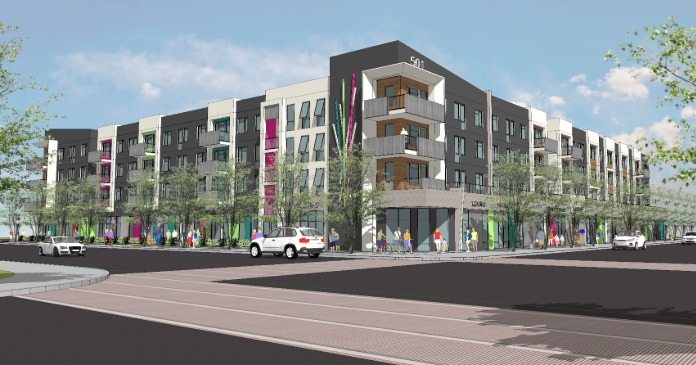People are naturally drawn to free stuff for emotional reasons with deep neurological roots. Free triggers the brain’s reward system releasing dopamine and creating a sense of excitement.
What’s in it for the giver relies on the principle of reciprocity, which plays a powerful role in such transactions: receiving something for nothing makes one feel subtly obligated to return the favor, often through loyalty or future support. “Zero-price effect” means people overvalue free items, ignoring potential downsides, focusing on the thrill of gaining something without immediate cost. The combination of emotional reward and irrational value assignment makes free offers irresistibly attractive and an easy lure.
Rent control—the mega lotto on free—is a dishonest political tool proven to undermine property rights, stifle investment and hurt the very residents it claims to protect. Worse, it’s a reassignment of other people’s money.
Free market v. cronyism
Housing conditions in Houston versus those in New York City are a simple case study of free markets—America’s lifeblood—versus socialism, cronyism and generational control of other’s assets. Houston is a living example of solving America’s housing crisis.
From 2010 to 2023, the Houston metropolitan area added over 1.5 million residents, making it the second-fastest growing metro in the nation, just behind Dallas-Fort Worth. Unlike other metros, Houston’s laws and policies make it easy and attractive for developers to build new housing, which has kept pace with its extraordinary growth. The result is home prices and rents that have remained relatively affordable.
Houston’s apartment vacancy rate in Q4 2024 was at a 20-year high of 11.7 percent according to CoStar but has now begun falling. As of Q2 2025 it’s at 11.3 percent. Economic Indicators Library says that a healthy vacancy rate for a city is between 5 and 8 percent, a range that would indicate a balanced rental market.
In Houston, average rents rose 4.8 percent y/y as of Q2 2025 and are projected to rise 2 to 4 percent over the next two years. This will be driven by strong job growth, population inflow and high mortgage rates that are holding households in the renter market.
Few cities match Houston’s scale or its pro-development culture. Most cities maintain traditional zoning and land-use restrictions that limit multifamily or higher-density housing. Houston’s policies encourage it. However, Houston has other attributes that are a direct match with other large metros.
Like New York City, Houston’s growth is diverse: Hispanics comprised 46.3 percent of the population in 2025, up from 43.8 percent in 2010. The Asian population has seen the fastest growth in Harris County, increasing by 42.5 percent from 2010 to 2023. The black population grew by 21.6 percent over the same period. Multiracial and “some other race” categories have also grown, reflecting increasing diversity and more residents identifying with multiple backgrounds. The only shrinking demo is whites. Non-Hispanic whites made up 23.7 percent in 2020, down from 25.6 percent of Houston’s population in 2010.
Houston’s homeless rate is also among the lowest of major U.S. cities and falling. As of January 2024, 3,280 people (less than 1 percent of its population) were experiencing homelessness in the Houston region (including Harris, Fort Bend, and Montgomery counties). This is a 60+ percent drop since 2011.
New York City may be Houston’s opposite. Compared with the population growth of Houston, New York City added only 82,903 residents between 2010 and 2023, marked by a net loss of over 631,000 residents post COVID. By July 1, 2023, the population had dropped to 8.26 million, essentially returning to 2010 levels.
Even with a shrinking population, New York City continues to experience the most severe housing crisis in its history. This is evidenced by record-low vacancy rates, skyrocketing rents, severe overcrowding and rising homelessness.
NYC’s net rental vacancy rate is just 1.4 percent as of 2023, the lowest since tracking began in the 1960s and far below the 5 percent threshold that defines the city’s criteria for “housing emergency.” For apartments renting below $1,650, the vacancy rate is even lower—less than 1 percent.
From 2010 to 2023, New York City added about 307,000 housing units (9 percent increase), bringing the total to over 3.7 million units. However, during the same period, job growth outpaced housing growth with jobs up 22 percent.
The NYC Regional Plan Association projects that the city will need 473,000 additional housing units by 2032 to catch up with demand. In 2023 only 11,000 new units were completed—about one-sixth of what is needed annually.
The constraint on housing has continued to elevate NYC rents resulting in a 5.4 percent y/y increase in February 2024, the highest in the country. As of April 2025, more than 350,000 people were estimated to be without homes in NYC according to estimates by Coalition for the Homeless. The city’s homelessness rate is about 1.1 percent of all residents, the highest among major U.S. cities and five times the national average
Policies matter
In stark contrast to Houston, New York City is dominated by calls for rent control and resident protections. Progressive candidates like Zohran Mamdani, the Democratic Socialist candidate for mayor of NYC, is running a Zero Price-Effect campaign promising free bus fares and childcare, tax free groceries, free gender surgeries and rent freezes on apartments. Mamdani’s Zero Price-Effect campaign has paid off in the primary, even with the city’s firsthand experience that rent control is a political gimmick that does more harm than good.
“You don’t build housing by attacking the people who build it. I’m a developer. And by attacking me, my company, our peers, it’s not effective,” said Jared Epstein, president of Aurora Capital Associates. “A rent freeze is a housing freeze, plain and simple,”
Mamdani ran a campaign focused on making one of the country’s most expensive places to live more attainable for average residents. His proposals call for multi-year rent freezes and massive investment in public housing. Critics argue his proposals could worsen existing problems in the rental market.
NYC’s rent control system began as an emergency response to its housing crisis, evolved through federal and state interventions, and today is part of a broader regulatory framework that continues to adapt to economic and political pressures.
Rent control strips landlords of the incentive to maintain and upgrade their properties. As returns dwindle, so does investment. The result: aging, neglected buildings and a shrinking supply of rental housing. NYC’s reliance on rent control has created a two-tiered system where some tenants are locked into artificially low rents, while everyone else faces skyrocketing prices and fewer options.
“There is overwhelming evidence that rent control reduces the quantity and quality of available housing. Strictly regulated cities like New York suffer from high prices and low construction, while cities with fewer restrictions enjoy lower prices and more homes,” said Economist Bryan Caplan, in The New York Times.
Learning from success
Houston’s success proves that when landlords and developers are free to respond to market demand, they can deliver the homes cities desperately need. Reducing regulatory barriers and encouraging private investment is the only proven way to increase supply and stabilize prices. “Landlords—both private and institutional—are essential partners in solving the housing crisis. Policies that undermine their ability to invest and operate only make the problem worse,” said Chairman Dame Kate Barker, of The Radix Big Tent Housing Commission.
Local, state, and federal governments must recognize that protecting property rights and encouraging investment are the keys to a healthy housing market. Laws that punish landlords with rent control only drive them out of the market, reducing supply and driving up prices for everyone.
Thousands of rent-stabilized units remain vacant because landlords cannot afford the expensive repairs required without the ability to increase rents. Many landlords argue that implementing a rent freeze would further exacerbate this problem.
Mamdani’s campaign website recognizes that his proposals would cost the city an estimated $100 billion over the next decade. To fund these initiatives, he would raise taxes on New Yorkers earning more than $1 million and increase the corporate tax rate.
By empowering landlords and developers, cities can create jobs, revitalize neighborhoods, and provide more housing options for all residents. Rent control is a failed policy that has no place in modern cities. It punishes landlords, discourages investment, and leaves tenants with fewer, lower-quality options. The only real solution is to trust the market, empower property owners, and remove the barriers that stand in the way of new construction.














